
views
Break up your meals.
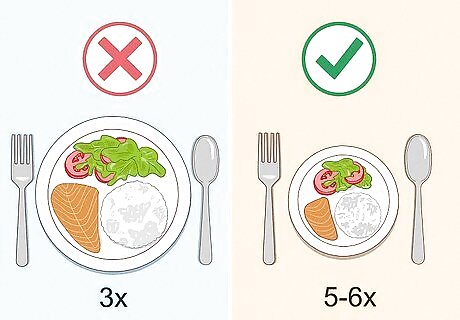
Big meals may be intimidating, so go for multiple small meals in a day. Instead of sitting down for three large meals, opt for five or six that are made up of smaller portions. If you’re currently underweight, you may feel fuller faster. By spreading your meals out throughout the day, you’ll eat less at a time, meaning less risk of feeling too full to eat. Instead of eating eggs paired with a couple pieces of peanut butter toast, give yourself an hour in between each dish.
Choose high-calorie, nutritious foods.
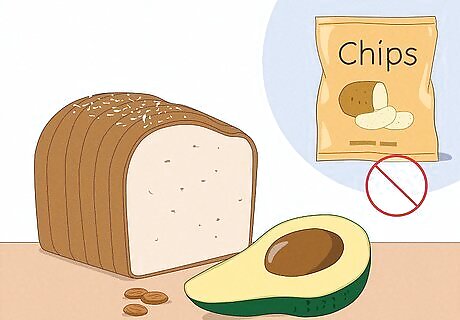
Increasing your calories doesn't need to mean skimping on nutrients. When someone is trying to consume more calories in a day, they’ll oftentimes go for high-calorie, low-nutrient choices, like potato chips, sodas, or fast food. Foods like this, though, are called “empty calories,” meaning that they don’t provide any of the nutrients you need to stay healthy and happy. To consume more high-calorie, high-nutrient foods, try: Seeds, nuts, and nut butters Healthy fats, like avocado, olives, and high-calorie cheese Potatoes, brown rice, and whole grain bread Dried fruits for high-calorie nutrition
Add bonus calories to your meals.

Swapping foods and including add-ons can boost calories at mealtime. When you’re preparing your meals, stay mindful about when you could tinker with your recipe to add in some extra calories. For instance, you could top yogurt with dried fruit and nuts. Try adding olive oil, honey, bacon bits, nuts, avocado, or dressings to your salads. Swap in breaded meats for un-breaded meats. Eat peanut butter with apples and celery, instead of eating the fruit or veggie on its own. Sprinkle cheese on your eggs and pastas to add some calories. Go for a high-calorie fruit juice over tea. Gain a healthy weight with guidance. "As a skinny guy, I always had a hard time putting on pounds. Using this guide's tips, I started eating more nutritious, high-calorie foods. In just a couple of months, I went from 120 to 130 pounds. For my naturally thin build, gaining 10 pounds made a big difference in my energy and self-confidence. The easy-to-follow advice gave me the plan I needed to see results." - Robert T. Follow the actionable advice for real results. "What I liked about the article was that it gave specific, easy tips I could actually do. Making breakfast smoothies, putting avocado in my salads, and keeping nut butters on hand are simple ways I've been able to add more calories to my diet. With clear instructions, it was easy to use these nourishing food ideas every day." - Mary W. Make smoothies for an easy nutrition boost. "I liked the tip on smoothies and shakes. Blending yogurt, milk, bananas, and protein powder lets me drink extra calories while still getting nutrients. Making a daily smoothie has been a tasty way to boost my calorie intake." - Jennifer B. Make every bite count with calorie-dense foods. "As someone losing their appetite from illness, I need to eat efficiently. The tips on picking naturally calorie-dense foods, adding extras like cheese, and planning nutritious snacks gave me ways to get the most from every bite. Now, I can get the calories I need without overeating. Even with a diminished appetite, I can eat nutritiously." - Michelle Y. Did you know that wikiHow has collected over 365,000 reader stories since it started in 2005? We’d love to hear from you! Share your story here.
Eat all of your favorites.

You're more likely to finish meals if you love what you eat. It may sound too easy to be real advice, but by eating more of the things you genuinely love, you’ll help increase your daily food intake. It’s still important to avoid too many empty calories, but you should feel totally empowered to fix yourself all of your other favorites at mealtime. Try to avoid favorites that are high in sugar and fat. It's okay to throw in a piece of cake every now and again, but most of your meals should remain nutrient rich. Focus on enjoying nutritious favorites. Try a sweet yogurt parfait, some spicy guac, or a grilled cheese on whole-wheat bread.
Make sure you’re eating breakfast.
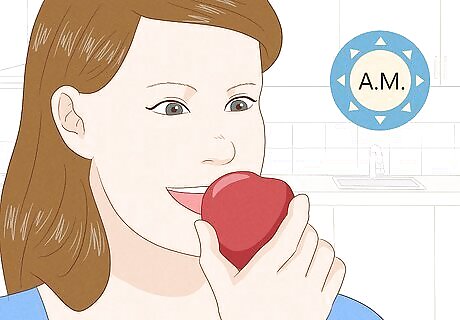
Though commonly skipped, breakfast is important to keep up appetites. Studies show that not eating breakfast means you’re less likely to eat more throughout the day. Plus, eating breakfast causes your body to burn more calories throughout the rest of the day—meaning if you eat it, you’ll probably have more of an appetite later on.
Avoid fiber.
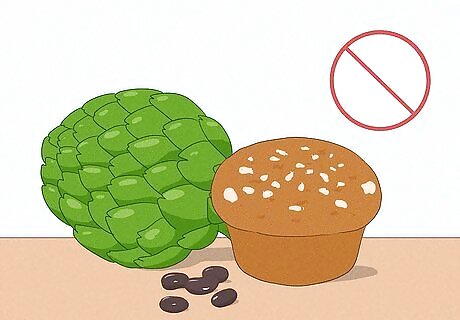
Fiber is great for you, but too much makes you feel fuller for longer. High-fiber foods are usually “energy dense,” meaning that they have low calories for their volume. In addition to this, these foods tend to be more filling, so you may not be as hungry for the remainder of your day. You should still get your recommended daily fiber intake, 21–25 grams (0.74–0.88 oz) for women and 30–38 grams (1.1–1.3 oz) for men, just try to avoid too many high-fiber foods that could suppress your appetite. Here are some examples of high-fiber foods: Beans and lentils Bran muffins Artichokes
Drink after your meals, not before.
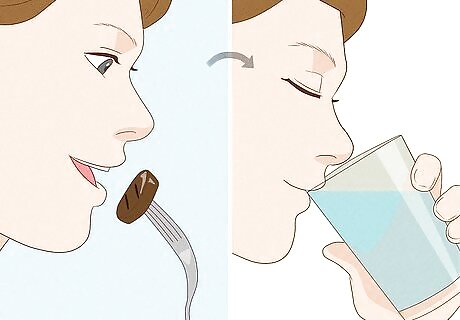
Drinking before meals can cause you to feel fuller faster. By drinking before you eat, your filling up your stomach, reducing the chances that you'll have full, high-calorie meal. To increase your appetite and food intake, wait to drink that glass of water until after you’ve finished eating. Avoid consuming liquids for at least thirty minutes before you plan to eat. You should still aim to get your daily recommended fluid intake, which is 15.5 cups (3.7 l) per day for men and 11.5 cups (2.7 l) per day for women.
Stay stocked up on quick, delicious meals.
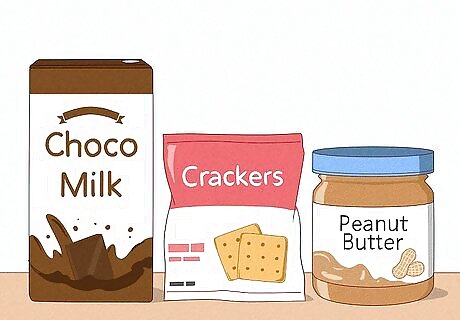
If hunger hits, you'll definitely want snacks at the ready. Your appetite may come and go throughout the day, especially if your loss of appetite is due to a health issue. Keep your fridge and pantry filled with easy-to-grab, high-calorie snacks that you love. This way, when you’re up to it, you’ll always have food available. Try these no-prep foods: Peanut butter Crackers and cheese Chocolate milk
Have a bedtime snack.
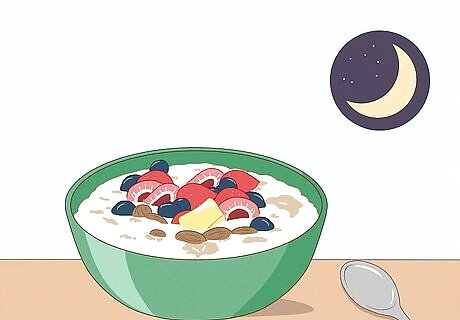
Eating right before bed helps you get more calories into your day. Sometimes, after finishing a big meal, you may be too full to eat the next time you sit down. By finishing a big, hearty snack or meal right before bed, though, you'll get in the extra calories without affecting your appetite for the rest of the day. Try out some healthy snacks before bed: A bowl of oatmeal with butter, nuts, and fruit A couple pieces of buttered toast A bowl of cereal with whole milk
Incorporate smoothies and shakes.
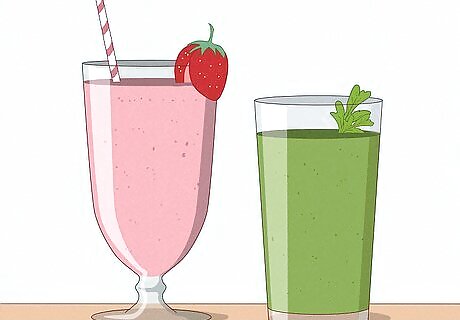
It may feel easier to drink your calories than to chew your calories. By using healthy, proteinous, and high-calorie ingredients, you can ratchet up your calorie consumption, keep getting the nutrients you need, and take a break from actually eating, if that’s a stressor for you. Vegetables, fruits, protein powder, whole milk, and flax seed can replace low-calorie, low-nutrient options, like diet soda and coffee. Try mixing 1 cup (240 mL) vanilla yogurt, 1 cup (240 mL) 2% milk, 1 medium banana in chunks, 2 tablespoons (30 mL) of wheat germ, and 2 tablespoons (30 mL) of protein powder in a blender.
Find enjoyable distractions during mealtime.

If you struggle to eat, it may help to shift your focus from food. By creating pleasant distractions during mealtime, you may find it easier to eat. This takes some of the pressure off of forcing yourself to have a big meal. Hopefully, by watching TV, chatting to a pal, or even reading a book, you may be able to finish your plate without having to overthink the process. Try to sit down for dinner with people who you love to talk to. Turn on a new show you’ve been looking forward to. Pro tip: use the commercials as your reminder to take a couple bites of your meal.
Give your meals a pleasant setting.
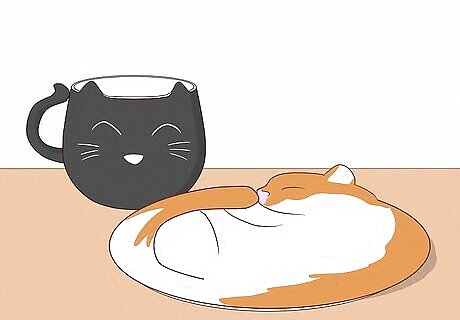
If you dread your meals, creating a nice, relaxing backdrop can help. Go for fun mugs, nice dishes, and your favorite place mat. Put on soft lighting, light a candle, and consider some flowers for the table. You could even focus on creating a plate of food that looks great; multiple textures and colors can look especially appetizing. Anything you dream up to make mealtime more fun and less stressful can help you eat more food in a day.
Set reminders to eat.
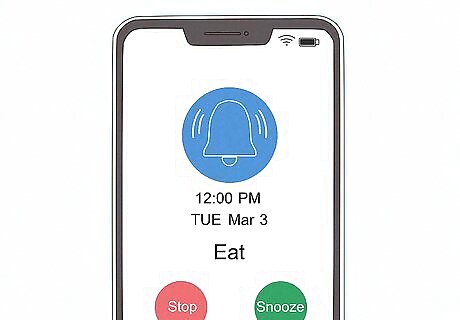
If your appetite doesn't remind you to eat, an alarm can. By keeping a routine up with mealtimes, you’ll increase your appetite and overall daily food intake. If you live with a friend or family member, you could ask them to remind you to eat at breakfast, lunch, and dinner. Or, you could easily accomplish this yourself with the alarm on your phone or a standard alarm clock.
Enjoy some exercise.
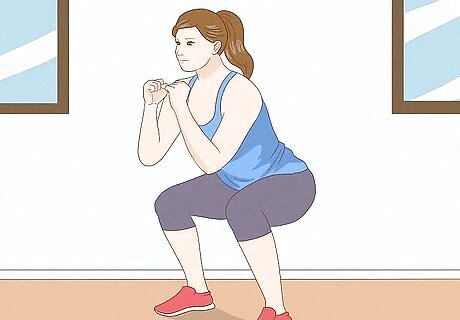
Getting active can increase your appetite. If your end goal is to gain weight, strength training exercises can be a great way to add muscle and overall mass. Additionally, when your burn calories, your body will likely crave a replacement for the calories lost. This will increase your appetite, making it easier to eat more throughout the day. Go for a nice, long walk at sunset. Enjoy a bike ride through your neighborhood. Try incorporating deadlifts, squats, lat pull downs, and other weight lifting exercises to increase appetite and muscle mass.











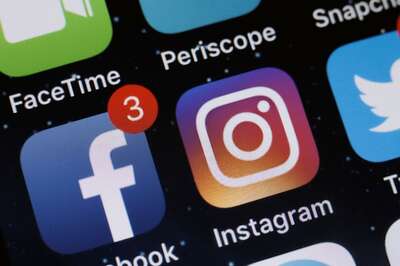
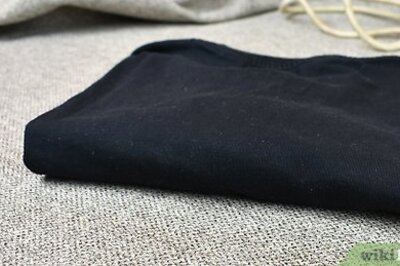


Comments
0 comment